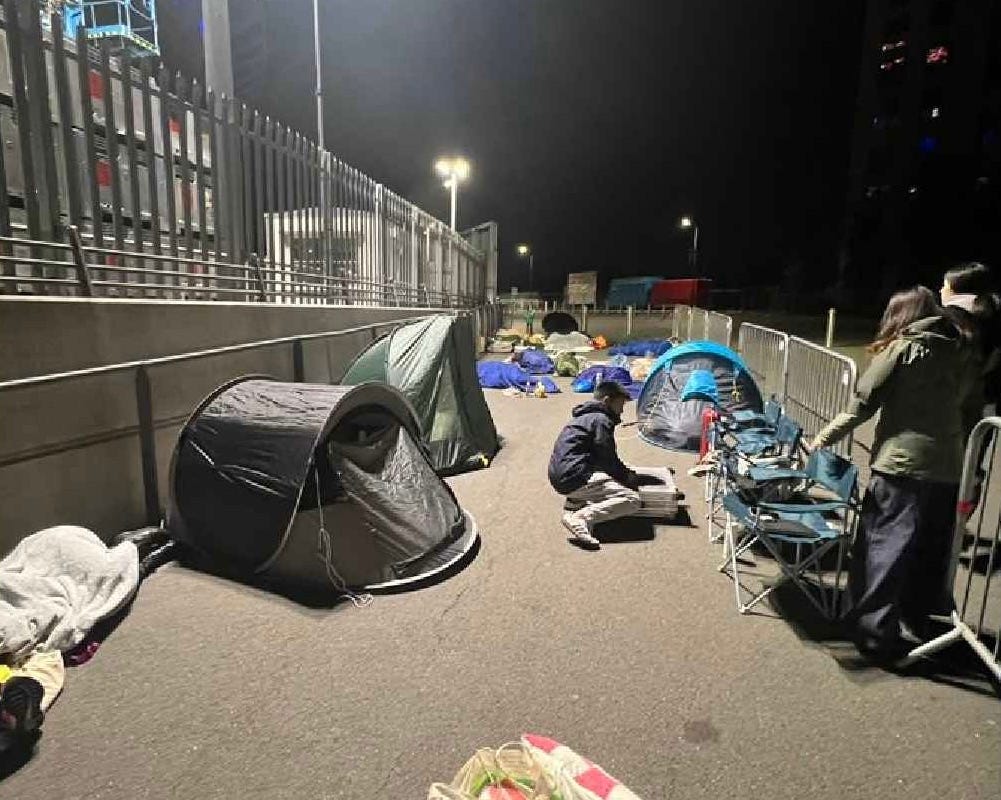Curating our event environment

A few weeks ago I delivered an event that my friend and I have been planning for months. It was a small event for around 80 people and its purpose was for every member of this partnership organisation (that coordinates organisations who respond in public emergencies) to meet each other in real life, deepen connections, so when they are called into action during an emergency, they respond better and faster, as they already know each other and have learned how to work together.
As I don't want to show any images of people, this photo above gives a snippet of what we created - the furniture we hired in as well as the real olive tree we hired to hang wishes from. Each attendee could write what inspired them to do the work they do and what they wished for next year (the venue itself is also a non-profit).
We wanted to create a cosy space for everyone to enter, feel welcomed and comfortable to relax and engage in conversation. We focused on creating a space that allowed their bodies and minds to settle and feel safe to be vulnerable. We really made the space sparkle.
The feedback we have received so far was how well the event was organised, how there was plenty of space between sessions to allow for networking, how inclusive and accessible it was - all feedback relating to how we connected the *structure* of the event to the *content* to create a safe space for them to do what they needed to.
Whilst this sounds obvious, I have worked in the events industry for seventeen years and it only dawned on me this year that (collectively) we have been focusing too much on the structure of the event, leaving the content almost until the end, and not been paying much attention to how it impacts people's experience, physiology and sense of safety. (This is part of the work I do in crowd safety, how the design of the event influences crowd behaviour). What I have learned is that if we do not feel safe, we will not be able to be vulnerable, connect, share with authenticity, learn, break down barriers or build meaningful relationships. This is because we are too busy focusing on our welfare, staying alive and safe, which usually puts our nervous system on the defensive.
Therefore the environment we create has a huge impact on the success of an event and satisfaction experienced by the person who attended. If we want them to get the most out of an event experience, we need to create the environment that allows them to let their guard down. We need to make them feel safe (as well as keeping them safe). Neurologically, we need to get them out of the Sympathetic Nervous System (fight, flight, freeze) into the Parasympathetic Nervous System (rest & digest), so in our brain, the limbic cortex chills and the neo cortex activates. We prime our audiences to be open minded to new ideas and enjoyable experiences.
Conversely, not wanting to throw shade at Taylor Swift, but here's an example of how the design of our event impacts the welfare of those attending (and working). The image below is of ticket holders, who have already paid money to attend The Eras Tour, camping outside in Wembley (not a very safe place), overnight, with little or no welfare facilities. The pitch is standing only, whereas for Taylor's previous concerts and for all of her shows in the USA, they were seated. If everyone had a seat for this show, would these ticket holders have camped overnight to queue before doors opened?

To me this is where the structure of the event was prioritised (to make more money by selling more tickets, and save money on hiring in chairs and the staff to install the chairs etc.) over the content. I feel I need better words for these, but you get the picture.
In addition, Taylor has repeatedly stopped her show to call] for medical attention for her fans on the pitch, and (as per screenshot of a Reddit post below titled ['Fans in the audience needing help'). I read about a number of medical incidents related to people standing for so long without enough hydration in high density areas.

For too long I think we have (collectively) been getting away with this or allowing it to happen. Lack of care for welfare and creating safe environments is something that audiences and event industry professionals are now beginning to set boundaries against. Although I feel we are at the beginning, this new awareness to the importance of establishing a safe environment will ultimately result in success not only for the audience, but for everyone involved.
***
Originally written on isemurphy.com
You can also subscribe via RSS feed, reply by email, and if you would like to share your support, you can buy me a coffee. Thanks!




